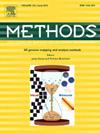改进皮质类固醇眼部疗法的纳米技术方法。
IF 4.3
3区 生物学
Q1 BIOCHEMICAL RESEARCH METHODS
引用次数: 0
摘要
使用皮质类固醇是治疗眼部炎症临床症状的首选方法。然而,眼部生理机制、解剖屏障和皮质类固醇的特性阻碍了皮质类固醇到达目标部位。因此,需要频繁地局部给药或眼部注射,导致不良反应风险较高,患者依从性较差。设计基于纳米技术工具的新型给药系统是克服皮质类固醇眼部给药相关缺点的有效方法。以纳米颗粒为基础的给药系统是眼部给药皮质类固醇现有剂型的替代品,因为由于其粒度和材料的特性,它们可以在眼部给药后增加溶解度、改善眼部渗透性、控制释放和增加生物利用度。因此,以脂质和聚合物为基础的纳米粒子已成为开发的主要策略,并产生了新的专利申请,以保护这些创新的给药系统,包括产品、其制备或给药方法。此外,值得注意的是,目前至少有 10 项临床试验正在进行,以评估基于皮质类固醇纳米颗粒的不同药物制剂在眼部的应用。通过全面而广泛的分析,本综述强调了纳米技术应用在皮质类固醇眼部炎症治疗中的影响。本文章由计算机程序翻译,如有差异,请以英文原文为准。
Nanotechnological approaches to improve corticosteroids ocular therapy
The administration of corticosteroids is the first-line treatment of the clinical conditions with ocular inflammation. Nonetheless, ocular physiological mechanisms, anatomical barriers and corticosteroid properties prevent it from reaching the target site. Thus, frequent topical administered doses or ocular injections are required, leading to a higher risk of adverse events and poor patient compliance.
Designing novel drug delivery systems based on nanotechnological tools is a useful approach to overcome disadvantages associated with the ocular delivery of corticosteroids. Nanoparticle-based drug delivery systems represent an alternative to the current dosage forms for the ocular administration of corticosteroids, since due to their particle size and the properties of their materials, they can increase their solubility, improve ocular permeability, control their release and increase bioavailability after their ocular administration. In this way, lipid and polymer-based nanoparticles have been the main strategies developed, giving rise to novel patent applications to protect these innovative drug delivery systems as a product, its preparation or administration method. Additionally, it should be noted that at least 10 clinical trials are being carried out to evaluate the ocular application of different pharmaceutical formulations based on corticosteroid-loaded nanoparticles.
Through a comprehensive and extensive analysis, this review highlights the impact of nanotechnology applications in ocular inflammation therapy with corticosteroids.
求助全文
通过发布文献求助,成功后即可免费获取论文全文。
去求助
来源期刊

Methods
生物-生化研究方法
CiteScore
9.80
自引率
2.10%
发文量
222
审稿时长
11.3 weeks
期刊介绍:
Methods focuses on rapidly developing techniques in the experimental biological and medical sciences.
Each topical issue, organized by a guest editor who is an expert in the area covered, consists solely of invited quality articles by specialist authors, many of them reviews. Issues are devoted to specific technical approaches with emphasis on clear detailed descriptions of protocols that allow them to be reproduced easily. The background information provided enables researchers to understand the principles underlying the methods; other helpful sections include comparisons of alternative methods giving the advantages and disadvantages of particular methods, guidance on avoiding potential pitfalls, and suggestions for troubleshooting.
 求助内容:
求助内容: 应助结果提醒方式:
应助结果提醒方式:


